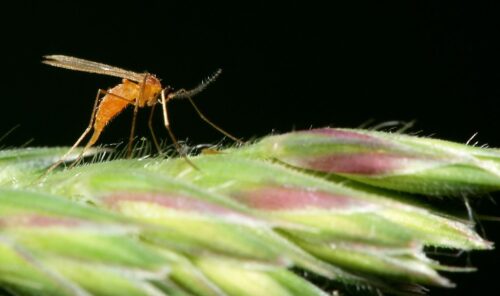Pear leaf gall midge; this fragile three-mm midge belongs to the gall midge family. This gall midge overwinters as a larva in a cocoon in the soil.
Pear leaf gall midge (Dasineura pyri). This fragile three-mm midge belongs to the gall midge family (Cecidomyiidae). This gall midge overwinters as a larva in a cocoon in the soil. After pupating in April, the midge lays eggs in the tops of still-young pear shoots. The larvae suck plant sap from the young leaves, forming small greenish-yellow galls. The leaf remains coiled, galls and leaves die, and the leaf turns black. The affected pear leaves dry up and fall off.
The pear leaf gall midge has three generations per year.
Earwigs, predatory bugs and parasitoid wasps are the natural enemies of the pear leaf gall midge.
Where to find
Control
Remove affected leaves.
Predator bugs, a natural enemy, are commercially available.
Prevention
A flock of chickens among the pear trees in early spring when the pear trees have not yet sprouted can prevent infestation by the pear leaf gall midge: the chickens look for the larvae in the cocoons in the soil around the pear trees and eat them.
Make the natural enemies of the pear leaf gall midge – earwigs, parasitoid wasps and predatory bugs – feel at home. An overturned flowerpot with some straw in it or a few dahlias attract earwigs.

